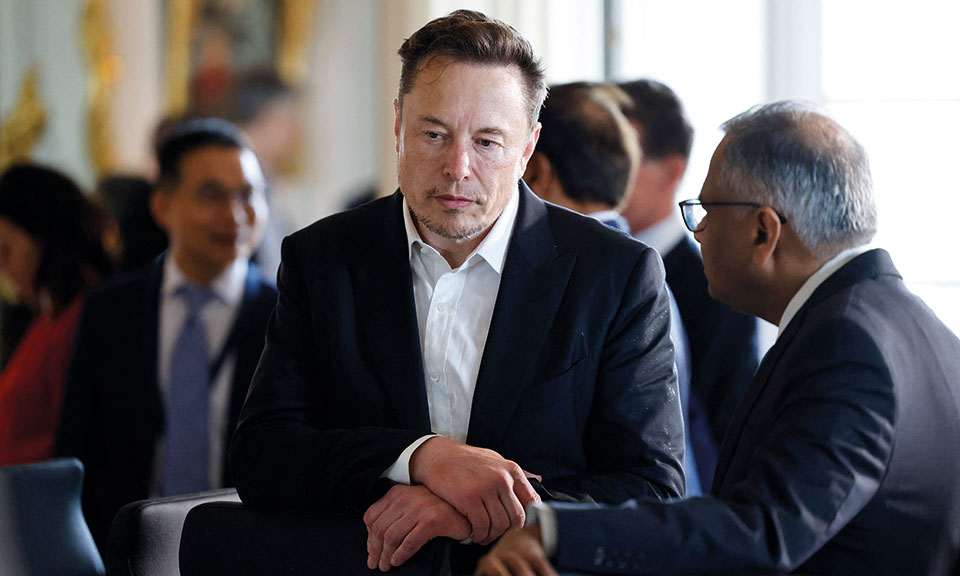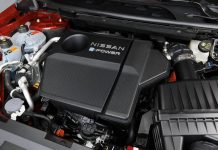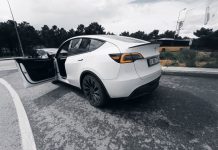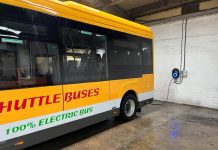AUTO FILE: With this, Tesla 1. We are sharing Elon Musk’s Exclusive Interview Questions and Answers one-on-one during the 2023 Quarter Earnings…
Editor by Ozgur Sunay
Tesla has announced Vehicle Production, Deliveries and Financial Results for the first Quarter of 2023. Tesla’s Chief Financial Officer Zachary J from Austin, Texas. Kirkhorn shared the report privately. With this, Tesla 1. We are sharing Elon Musk’s Exclusive Interview Questions and Answers one-on-one during the 2023 Quarter Earnings. At the very beginning of our research file topic, let’s take a look at what happened to Tesla and Elon Musk before this day of 2023. First, in January 2023, Tesla announced that investment negotiations with Indonesia were underway. The US automaker is reportedly nearing a preliminary agreement to build production facilities with a capacity of one million units. In January, Tesla postponed plans to expand its Shanghai factory. Elon Musk defied his competitors by lowering the prices of his electric vehicles by up to 20% globally in January. At the end of January, Musk recorded a surge in Tesla sales as price cuts boosted demand.
Musk, “He said he expected a “pretty difficult recession this year,” but demand for Tesla vehicles “will be good despite probably a contraction in the automotive market as a whole.”

On February 4, 2023, Tesla increased Model Y prices by $1,000 after the United States loosened the terms of the tax credit. Mexican President Andres Manuel Lopez Obrador announced that electric car manufacturer Tesla may build a new plant in the states of Nuevo Leon or Hidalgo. US President Joe Biden praised Tesla’s plan to turn on charging networks in February, saying it was a ‘big deal’.
Biden said. “To this end, Elon Musk will open up a large part of Tesla’s network to all drivers. This is very important and will make a big difference.” At the end of February, Tesla’s German factory in Brandenburg, near Berlin, reached production of 4,000 cars per week. Tesla announced on March 1 that it will open an office in the Southeast Asian country and build a network of charging stations for its cars. A statement from the Malaysian Ministry of Commerce said that Tesla’s application to import battery-powered electric cars to Malaysia has been approved, and the company will also open showrooms and service centers. At the beginning of March, Tesla announced that it was preparing to renew the Model Y, called ‘Juniper’kod. The Shanghai assembly plant is being retrofitted to prepare for a revamped version of the Model Y, the best-selling crossover EV in California, China and Europe. Tesla Finance Director Zach Kirkhorn said the factory layout for Model Y production has changed at the three facilities that produce the vehicle, and Tesla will work to standardize the planning of future vehicles to reduce costs and complexity. Tesla abruptly cut the prices of the US Model S and Model X by between 4% and 9% in March. Tesla has offered discounts of up to 20% starting in January. Tesla has reduced the prices of its electric vehicles in Europe, Israel and Singapore, expanding the global discounting movement it launched in China in January. In April, Tesla announced its fifth vehicle price cut in the US. Elon Musk announced a hike in US prices in the last week of April, days after the sixth price cut. Tesla has started producing a version of the Model Y at its Shanghai factory, which will be sold in Canada in April. July May and Dec customers in Canada will be able to take delivery of the new version of the Model Y between May and July, Musk said. Musk announced in May that Tesla aims to finish construction of its Mexican factory next year and reach full production about a year later. Musk increased the prices of all variants of Model S and X vehicles by $1,000 in May, while increasing the prices of all Model Y variants by $250. Tesla’s new car production process began to cause controversy among industry experts in May. German researcher Jan-Philipp Büchler from the Free University of Dortmund believes that Tesla’s new process is “revolutionary” and adds: “This is much more than modular production … Eliminates standard steps, creates new working patterns, increases speed, reduces complexity.” he explained. Tesla CEO Elon Musk announced in Versailles in May that he would make significant investments in France. Asked after a meeting with French President Emmanuel Macron whether Tesla planned to announce investments in France, Musk said “I think at some point, but not today, at some point, yes”. Musk, who put the discontinued plan into operation in May; Tesla has applied to expand its Shanghai factory and add battery cell output. ” he said the potential expansion would give the Shanghai Gigafactory the capacity to produce 1.75 million powertrain units annually, up from 1.25 million currently.” Tesla has restarted the Indian talks with a new factory offer. Tesla has started offering discounts of more than $1,300 on some Model 3 cars in its U.S. inventory. Tesla CEO Elon Musk has told shareholders that the company will try to advertise for the first time, in a move that analysts see as a bid to boost demand. Ford signed a deal with Tesla in the last week of May to gain access to rival charging stations starting in 2024. Ford to allow access to more than 12,000 Tesla Superchargers in North America by early 2024. Shares of Ford and Tesla rose over 7% after the supercharging deal. Finally, Musk is scheduled to visit China this week and meet with Chinese Premier Li Qiang.

Financial Results with Date and 2023 First Quarter Results for Tesla Vehicle Production and Delivery. Zachary J. Kirkhorn Financial Director, UNITED STATES Washington, D.C. 20549
Our mission is to accelerate the world’s transition to sustainable energy. We design, develop, manufacture, lease and sell high-performance fully electric vehicles, solar energy generation systems and energy storage products. We also offer maintenance, installation, operation, financial and other services related to our products. Additionally, we are increasingly focused on products and services based on artificial intelligence, robotics and automation. In 2023, we produced 440,808 consumer vehicles and delivered 422,875 consumer vehicles through the first quarter. We are currently focused on increasing vehicle production, capacity and delivery capabilities, reducing costs, improving and developing battery technologies, improving our FSD capabilities, increasing the affordability and efficiency of our vehicles, bringing new products to market and expanding our global infrastructure. In 2023, we deployed 3.89 GWh of energy storage products and 67 megawatts of solar energy systems through the first quarter. We are currently focused on ramping production of energy storage products, improving our Solar Roof installation capability and efficiency, and increasing market share of retrofit solar energy systems. During the three months ended March 31, 2023, we recognized total revenues of $23.33 billion, representing an increase of $4.57 billion, compared to the prior year. We continue to ramp production, build new manufacturing capacity and expand our operations to enable increased deliveries and deployments of our products and further revenue growth. During the three months ended March 31, 2023, our net income attributable to common stockholders was $2.51 billion, representing an unfavorable change of $805 million, compared to the prior year. We continue to focus on improving our profitability through production and operational efficiencies. We ended the first quarter of 2023 with $22.40 billion in cash and cash equivalents and investments, representing an increase of $217 million from the end of 2022. Our cash flows provided by operating activities during the three months ended March 2023 and 2022 were $2.51 billion and $4.00 billion, respectively, representing a decrease of $1.48 billion. Capital expenditures amounted to $2.07 billion during the three months ended March 31, 2023, compared to $1.77 billion during the same period ended March 31, 2022. Sustained growth has allowed our business to generally fund itself, and we will continue investing in a number of capital-intensive projects in upcoming periods. We are focused on growing our manufacturing capacity, which includes ramping all of our production vehicles to their installed production capacities as well as increasing production rate, efficiency and capacity at our current factories. The next phase of production growth will depend on the ramp at Gigafactory Berlin-Brandenburg and Gigafactory Texas, as well as our ability to add to our available sources of battery cell supply by manufacturing our own cells that we are developing to have high-volume output, lower capital and production costs and longer range. Our goals are to improve vehicle performance, decrease production costs and increase affordability and customer awareness. However, these plans are subject to uncertainties inherent in establishing and ramping manufacturing operations, which may be exacerbated by the new product and manufacturing technologies we are introducing, the number of concurrent international projects, any industry-wide component constraints, labor shortages and any future impact from events outside of our control such as the COVID-19 pandemic. . Moreover, we have set ambitious technological targets with our plans for battery cells as well as for iterative manufacturing and design improvements for our vehicles with each new factory. Our cost reduction efforts, cost innovation strategies, and additional localized procurement and manufacturing are key to our vehicles’ affordability, and for example, have allowed us to competitively price our vehicles. We will also continue to generate demand and brand awareness by improving our vehicles’ performance and functionality, including through products based on artificial intelligence such as Autopilot and FSD, and other software features, and delivering new vehicles, such as our upcoming Cybertruck.

Moreover, we expect to continue to benefit from ongoing electrification of the automotive sector and increasing environmental awareness. However, we operate in a cyclical industry that is sensitive to political and regulatory uncertainty, including with respect to trade and the environment, all of which can be compounded by inflationary pressures, rising energy prices, increases in interest rates and the liquidity of enterprise customers. For example, inflationary pressures have increased across the markets in which we operate. In an effort to curb this trend, central banks in developed countries raised interest rates rapidly and substantially, impacting the affordability of vehicle lease and finance arrangements. Further, sales of vehicles in the automotive industry also tend to be cyclical in many markets, which may expose us to increased volatility as we expand and adjust our operations. Moreover, as additional competitors enter the marketplace and help bring the world closer to sustainable transportation, we will have to adjust and continue to execute well to maintain our momentum. These macroeconomic and industry trends have had, and will likely continue to have, an impact on the pricing of, and order rate for our vehicles, and in turn our operating margin. As our production increases, we must work constantly to similarly increase vehicle delivery capability so that it does not become a bottleneck on our total deliveries. We are also committed to reducing the percentage of vehicles delivered in the third month of each quarter, which will help to reduce the cost per vehicle. As we expand our manufacturing operations globally, we will also have to continue to increase and staff our delivery, servicing and charging infrastructure accordingly, maintain our vehicle reliability and optimize our Supercharger locations to ensure cost effectiveness and customer satisfaction. In particular, we remain focused on increasing the capability and efficiency of our servicing operations. The long-term success of this business is dependent upon increasing margins through greater volumes. We continue to increase the production of our energy storage products to meet high levels of demand, including the announcement of a new Megafactory in Shanghai. For Megapack, energy storage deployments can vary meaningfully quarter to quarter depending on the timing of specific project milestones. For Powerwall, better availability and growing grid stability concerns drive higher customer interest. We remain committed to growing our retrofit solar energy business by offering a low-cost and simplified online ordering experience. In addition, we continue to seek to improve our installation capabilities and price efficiencies for Solar Roof. As these product lines grow, we will have to maintain adequate battery cell supply for our energy storage products and hire additional personnel, particularly skilled electricians, to support the ramp of Solar Roof. Our capital expenditures are typically difficult to project beyond the short-term given the number and breadth of our core projects at any given time, and may further be impacted by uncertainties in future global market conditions. We are simultaneously ramping new products, ramping manufacturing facilities on three continents, piloting the development and manufacture of new battery cell technologies and investing in autonomy and other artificial intelligence enabled products, and the pace of our capital spend may vary depending on overall priority among projects, the pace at which we meet milestones, production adjustments to and among our various products, increased capital efficiencies and the addition of new projects.

Owing and subject to the foregoing as well as the pipeline of announced projects under development, all other continuing infrastructure growth and varying levels of inflation, we currently expect our capital expenditures to be between $7.00 to $9.00 billion in 2023 and in each of the following two fiscal years. Our business has recently been consistently generating cash flow from operations in excess of our level of capital spend, and with better working capital management resulting in shorter days sales outstanding than days payable outstanding, our sales growth is also facilitating positive cash generation. We have and will continue to utilize such cash flows, among other things, to do more vertical integration, expand our product roadmap and provide financing options to our customers. On the other hand, we are likely to see heightened levels of capital expenditures during certain periods depending on the specific pace of our capital-intensive projects and rising material prices and increasing supply chain and labor expenses resulting from changes in global trade conditions and labor availability associated with the COVID-19 pandemic. Automotive sales revenue increased $3.36 billion, or 22%, in the three months ended March 31, 2023 as compared to the three months ended March 31, 2022, primarily due to an increase of 108,378 combined Model 3 and Model Y deliveries year over year despite a negative impact from the United States dollar strengthening against other foreign currencies in the three months ended March 31, 2023 as compared to the prior period. This was achieved from production ramping of Model Y at Gigafactory Shanghai, Gigafactory Berlin-Brandenburg, Gigafactory Texas and the Fremont Factory. This increase was partially offset by lower average selling price on our vehicles driven by overall price reductions year over year. There was also a decrease of 2,630 Model S and Model X deliveries year over year. Automotive regulatory credits revenue decreased $158 million, or 23%, in the three months ended March 31, 2023 as compared to the three months ended March 31, 2022. We recognized $288 million in revenue in the first quarter of 2022 primarily due to changes in regulation which entitled us to additional consideration for credits sold previously, in the absence of which we had an increase in automotive regulatory credits revenue year over year. This increase was primarily due to the increase in volume as well as the regional mix of the credits sold. Automotive leasing revenue decreased $104 million, or 16%, in the three months ended March 31, 2023 as compared to the three months ended March 31, 2022. The change is primarily due to a decrease in direct sales-type leasing revenue driven by lower deliveries year over year. This was partially offset by an increase from the growing portfolio of our direct operating lease program. Services and other revenue increased $558 million, or 44%, in the three months ended March 31, 2023 as compared to the three months ended March 31, 2022. The change is primarily due to an increase in used vehicle revenue driven by increases in volume offset by decreases in average selling price of used Tesla and non-Tesla vehicles, non-warranty maintenance services revenue as our fleet continues to grow, paid Supercharging revenue, insurance services revenue and retail merchandise revenue. Energy generation and storage revenue increased $913 million, or 148%, in the three months ended March 31, 2023 as compared to the three months ended March 31, 2022, primarily due to an increase in deployments of Megapack, higher solar cash and loan deployments at a higher average selling price, as well as increase in deployments of Powerwall at a higher average selling price, year over year. Gross margin for total automotive decreased from 32.9% to 21.1% in the three months ended March 31, 2023 as compared to the three months ended March 31, 2022. This was driven by the changes in automotive sales revenue and cost of automotive sales revenue, as well as a decrease in regulatory credits revenue, as discussed earlier. Gross margin for total automotive & services and other segment decreased from 30.5% to 19.9% in the three months ended March 31, 2023 as compared to the three months ended March 31, 2022, primarily due to the automotive gross margin decrease discussed above, partially offset by an improvement in our services and other gross margin. Cost of energy generation and storage revenue increased $673 million, or 98%, in the three months ended March 31, 2023 as compared to the three months ended March 31, 2022, primarily due to increase in deployments of Megapack, increase in solar cash and loan deployments at a higher average cost due to increased component costs, as well as increase in deployments of Powerwall. Gross margin for energy generation and storage improved from -11.7% to 11.0% in the three months ended March 31, 2023 as compared to the three months ended March 31, 2022. This was driven by the growth in energy generation and storage revenue and cost of energy generation and storage revenue as discussed above. Additionally, there was a higher proportion of energy storage sales, which operated at a higher gross margin, within the segment. Research and development (“R&D”) expenses decreased $94 million, or 11%, in the three months ended March 31, 2023 as compared to the three months ended March 31, 2022. The overall decrease was primarily driven by additional costs in the three months ended March 31, 2022 as compared to the current period, as we were in the pre-production phase at Gigafactory Texas and started production at Gigafactory Berlin-Brandenburg only closer to the end of the first quarter of 2022. Selling, general and administrative (“SG&A”) expenses increased $84 million, or 8%, in the three months ended March 31, 2023 as compared to the three months ended March 31, 2022. This was driven by a $84 million increase in facilities-related expenses and a $49 million increase in employee and labor costs primarily from increased headcount, including professional services. These increases were offset by a decrease of $52 million in stock-based compensation expense, most of which is attributable to the lower stock-based compensation expense of $48 million on the 2018 CEO Performance Award which was fully expensed as of December 31, 2022. Interest income increased $185 million, or 661%, in the three months ended March 31, 2023 as compared to the three months ended March 31, 2022. This increase was primarily due to higher interest earned on our cash and cash equivalents and short-term investments during the three months ended March 31, 2023 as compared to the prior period. This was driven by an increase in our short-term investments balance and rising interest rates. Other (expense) income, net, changed unfavorably by $104 million in the three months ended March 31, 2023 as compared to the three months ended March 31, 2022. The change is primarily due to fluctuations in foreign currency exchange rates. Liquidity and Capital Resources: We expect to continue to generate net positive operating cash flow as we have done in the last four fiscal years. The cash we generate from our core operations enables us to fund ongoing operations and production, our research and development projects for new products and technologies including our proprietary battery cells, additional manufacturing ramps at existing manufacturing facilities such as the Fremont Factory, Gigafactory Nevada, Gigafactory Shanghai and Gigafactory New York, the ramp of Gigafactory Berlin-Brandenburg and Gigafactory Texas, the construction of future factories, and the continued expansion of our retail and service locations, body shops, Mobile Service fleet, Supercharger network, energy product installation capabilities and autonomy and other artificial intelligence enabled products. In addition, because a large portion of our future expenditures will be to fund our growth, we expect that if needed we will be able to adjust our capital and operating expenditures by operating segment. For example, if our near-term manufacturing operations decrease in scale or ramp more slowly than expected, including due to global economic or business conditions, we may choose to correspondingly slow the pace of our capital expenditures.

Finally, we continually evaluate our cash needs and may decide it is best to raise additional capital or seek alternative financing sources to fund the rapid growth of our business, including through drawdowns on existing or new debt facilities or financing funds. Conversely, we may also from time to time determine that it is in our best interests to voluntarily repay certain indebtedness early. Accordingly, we believe that our current sources of funds will provide us with adequate liquidity during the 12-month period following March 31, 2023, as well as in the long-term. From time to time in the ordinary course of business, we enter into agreements with vendors for the purchase of components and raw materials to be used in the manufacture of our products. However, due to contractual terms, variability in the precise growth curves of our development and production ramps, and opportunities to renegotiate pricing, we generally do not have binding and enforceable purchase orders under such contracts beyond the short-term, and the timing and magnitude of purchase orders beyond such period is difficult to accurately project. We transact business globally in multiple currencies and hence have foreign currency risks related to our revenue, costs of revenue, operating expenses and localized subsidiary debt denominated in currencies other than the U.S. dollar (primarily the Chinese yuan, euro, Australian dollar and Canadian dollar in relation to our current year operations). In general, we are a net receiver of currencies other than the U.S. dollar for our foreign subsidiaries. Accordingly, changes in exchange rates affect our revenue and other operating results as expressed in U.S. dollars as we do not typically hedge foreign currency risk. We have also experienced, and will continue to experience, fluctuations in our net income as a result of gains (losses) on the settlement and the re-measurement of monetary assets and liabilities denominated in currencies that are not the local currency (primarily consisting of our intercompany and cash and cash equivalents balances).
Musk, Tesla interview-questions;
- Can you give current and future guidance on margin for the Energy business.?
– We’re hopeful to get there later this year, but that’s not a promise. That’s an aspiration. I think we are — we will get to the point where we, as a company, provide guidance on the storage business. I say storage is a combination of both the Megapack business and the Powerwall business. Relative to total revenues of the company, it’s still fairly small. And the business has a lot of volatility currently, both in terms of volumes as well as financials just given the small volumes and diversification of the customer pool there. But as this business grows and smooths out, I don’t think we’re that far away from it. I think including these volumes on our day two production and deliveries release is something that we’ll start doing and then we can talk more formally as a business about our expectations over the coming year. I think it will be a few more quarters before we get there. - What is the process to make auto pricing adjustments? What variables do you consider? How frequently do you review pricing?
– I think this is not something that we can really talk about. It’s just — we do our best to evaluate the production output, macroeconomic conditions, and we make a decision. But it’s — and unless there’s something you’d like to add, Zach. I think that’s right. I mean, as a team, we review where we stand globally on a weekly basis and certainly, I can’t get into the details of the reasons why certain decisions are made. But it is something that’s very actively managed by a subset of the leadership team. - Do you still believe Tesla Energy will be bigger than auto and when will you provide more formal guidance on megapack and overall Tesla energy?
– I should just clarify like bigger than auto from the standpoint of like total gigawatt hours deployed. So its possible automotive revenue may be higher, but gigawatt hours I think will be probably higher with stationary storage. If you just look at the — what’s needed to transition the world to a sustainable energy economy, there is more stationary energy storage needed than there is mobile energy storage. So — and we are seeing growth of our stationary storage well in excess of automotive. So that is in line with expectations.
- Can you give updated specs and pricing for Cybertruck, and any new features that will make it to production?
– Well, I think we’ll save that for the Cybertruck handover, which will hopefully be around the end of Q3 this year. And one thing I am confident of saying is that, it’s an incredible product, it’s a hall of famer, I think. And a product like this only comes once in a long while. So it will not be disappointed at all. It’s amazing.
- How has global order intake tracked since the most recent round of price cuts?
– I think the overall thing we can say is that orders are in excess of production.








































